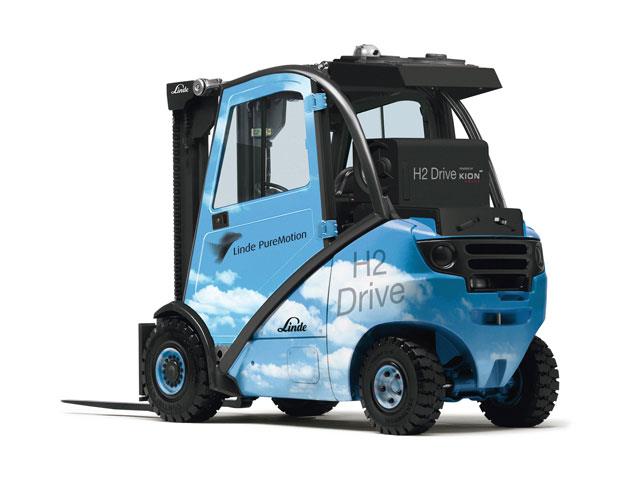 Linde unveiled the world's first direct-injection hydrogen combustion engine for forklifts at CeMAT 2008. |
Linde has boosted its green credentials by introducing the world's first direct-injection hydrogen combustion engine for forklifts, a new hybrid truck and a fuel cell-powered tow tractor at CeMAT 2008 in Hannover, Germany.
The materials handling leader has been intensively researching and developing efficient solutions to combat the issues of dwindling oil reserves and more stringent exhaust gas standards while remaining globally competitive.
Director Theodor Maurer says the main focus of the research with partners is hybrid vehicles and forklifts with hydrogen engines and fuel cells.
"Specialists from the industrial and research sector are expecting the first hydrogen technology series products to be launched in the vehicle sector between 2015 and 2020," he says.
At CeMAT, Linde presented a concept forklift with a direct-injection hydrogen combustion engine. The three-tonne capacity forklift can reach its maximum power rating using hydrogen. There are no emissions as the hydrogen-powered engine turns the fuel into water vapour.
The forklift is based on the Linde 39X series and compared to equivalent models with conventional drives, it has a "thrust-controlled fuel tank system" and "intercooler attached to the overhead guard".
"The fuel tank system is mounted on the counterweight and is in-between the vehicle's b-pillar," a Linde statement says.
To replace the pressure pump, the fuel tank is reversed onto a rail system where the cartridge is removed from the side. The cartridge consists of a thin-walled inner aluminium container that is encased with carbon fibres and epoxy resin. It can hold about 26 litres of hydrogen that is equivalent to 2.3 litres of useable diesel.
The compressor-charged direct-injection engine with 2.0 litre piston capacity and a 43kW power rating, manufactured by Volkswagen Industrial Engines, is not visible from the outside. Hydrogen stored in the pressure pump enters the engine's combustion chamber directly, enabling the fuel to burn efficiently.
Linde says it will continue to develop further enhancements and conduct truck field tests before launching its first hydrogen series forklift, which could be economically viable by 2015.
The forklift manufacturer believes hydrogen vehicles will be introduced in the industrial vehicle sector before the automotive industry because of simpler infrastructural challenges to overcome.
Linde's hybrid truck is based on a 39X series diesel forklift and can lift up to 3.5 tonnes. Besides an internal combustion engine, the forklift has an electric motor that can operate a starter and generator. Linde says the forklift reduces fuel consumption by up to 25%.
The fuel cell tow tractor Linde unveiled at CeMAT this week is "on the brink of prototype maturity for small series development", says head of pre-development Udo Herrmann.
"Over the next seven years, Linde plans to send a total of 50 successive industrial trucks with hydrogen technology for a broad range of field tests," he says.
The vehicles will be tested in multi-shift use over a period of 800 hours at selected customers.
"The aim of the field testing being carried out until 2015 is to involve customers from an early stage. This will enable us to collate important experience right from the prototype phase," Herrmann explains.
The P250 tow tractor has a continuous output of 10kW, a maximum output of 30kW, a voltage of 80V and a traction force of 5,000N.